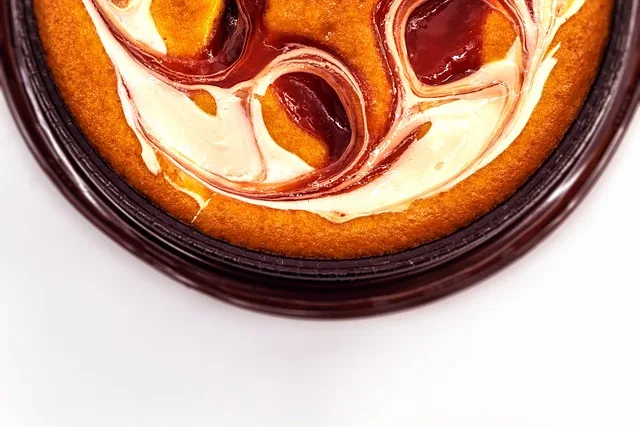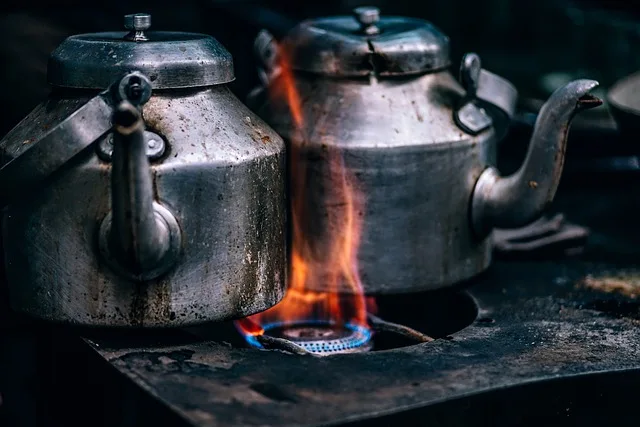First things first, let’s talk about planning. Before you dive in, take a good look at your kitchen. Measure your space like a pro—trust me, you don’t want to end up with cabinets that don’t fit! Sketch out your dream layout. Think of it as creating a blueprint for your culinary kingdom.

Next, gather your materials. You’ll need cabinets, screws, a level, and maybe even a friend to help you out. It’s like assembling a puzzle, but way more rewarding. When you start installing, remember to work from the top down. This way, you avoid any awkward bending or reaching. Plus, it keeps everything nice and tidy.
Now, let’s get to the fun part—hanging those cabinets! Use a level to ensure they’re straight. There’s nothing worse than a crooked cabinet; it’s like wearing mismatched socks! Secure them to the wall, and don’t be shy with the screws. You want these babies to stay put.
Once your cabinets are up, it’s time to add your personal touch. Paint, stain, or even add some funky hardware. Think of it as accessorizing your kitchen. A little flair can go a long way in making your space feel uniquely yours.
Transform Your Space: A Step-by-Step Guide to DIY Kitchen Cabinet Installation
First things first, gather your materials. You’ll need cabinets, screws, a level, a drill, and maybe a friend or two to help you out. Think of it like assembling a puzzle; each piece has its place, and when you fit them together just right, you’ll create a masterpiece.
Next, it’s time to measure your space. Grab that tape measure and channel your inner architect! Accurate measurements are crucial; you don’t want to end up with cabinets that are too big or too small. It’s like trying to fit a square peg in a round hole—frustrating, right?
Once you’ve got your measurements down, it’s time to prep the area. Clear out your old cabinets and give the walls a good clean. Imagine you’re giving your kitchen a fresh canvas to work with. Now, mark where your new cabinets will go. This is your blueprint, so make sure it’s precise!
Now comes the fun part: installation! Start with the upper cabinets, as they’re lighter and easier to handle. Use a level to ensure they’re straight—nobody wants a crooked cabinet, right? Secure them in place, and then move on to the lower cabinets. It’s like building a solid foundation for a house; everything needs to be sturdy and aligned.
Unlock Your Inner Designer: Tips for a Flawless DIY Kitchen Cabinet Makeover
First off, let’s talk about color. Choosing the right hue can transform your kitchen from drab to fab. Think of your cabinets as a blank canvas. Do you want a bold statement with a deep navy blue, or something more subtle like a soft sage green? Remember, colors can evoke emotions—so pick one that makes you feel good every time you step into your kitchen.
Next, consider the finish. A glossy finish can add a modern touch, while a matte finish gives a more rustic vibe. It’s like choosing between a shiny sports car and a classic vintage ride; both are stunning, but they convey different styles. Don’t forget to prep your surfaces! Sanding and priming are crucial steps that ensure your paint adheres properly and lasts longer.
Now, let’s spice things up with hardware. Swapping out old knobs and handles for trendy ones can make a world of difference. Imagine your cabinets wearing a new outfit—those chic handles are like the perfect accessories that complete the look.
Lastly, don’t shy away from adding personal touches. Whether it’s a fun stencil, a pop of wallpaper inside the cabinets, or even some decorative molding, these little details can showcase your personality and make your kitchen truly yours.
So, are you ready to roll up your sleeves and get started? Your dream kitchen is just a few brush strokes away!
From Drab to Fab: How to Install Kitchen Cabinets Like a Pro Without Breaking the Bank

First things first, let’s talk about planning. Imagine your kitchen as a blank canvas. Before you dive in, take a moment to sketch out your vision. What style do you want? Modern, rustic, or maybe a chic farmhouse vibe? Once you have a clear idea, measure your space. Trust me, there’s nothing worse than ordering cabinets only to find they don’t fit!
Next, it’s time to shop smart. Look for sales at local home improvement stores or check out online retailers. You can often find quality cabinets at a fraction of the price. Consider ready-to-assemble (RTA) cabinets—they’re budget-friendly and come with easy-to-follow instructions. Think of them as the IKEA of the kitchen world!
Now, let’s get to the fun part: installation. Start by removing your old cabinets, but don’t just rip them out like a kid tearing into a birthday present. Take your time, and be careful not to damage the walls. Once the old cabinets are out, it’s time to level the playing field. Use a level to ensure your new cabinets sit perfectly straight—this is crucial for a polished look.
DIY Kitchen Cabinet Installation: Common Mistakes and How to Avoid Them
First off, let’s talk measurements. You wouldn’t believe how many people skip this crucial step. Imagine buying beautiful cabinets only to find they don’t fit your space. It’s like ordering a size 10 dress when you’re a size 6—total disaster! Always measure twice and cut once. Use a level to ensure your cabinets are straight; a slight tilt can lead to a cascade of problems down the line.
Next, let’s discuss the importance of proper support. Cabinets are not just decorative; they need to hold your dishes, pots, and all those kitchen gadgets. If you don’t secure them properly, you might end up with a cabinet that looks great but can’t handle the weight. Think of it like building a house of cards—one wrong move, and it all comes crashing down.
Another common mistake? Skipping the prep work. You wouldn’t paint a wall without priming it first, right? The same goes for your cabinets. Make sure the walls are clean and free of any old hardware. This prep work is like laying a solid foundation for a house; it sets the stage for everything that follows.
Lastly, don’t forget about the finishing touches. It’s easy to get caught up in the installation process and overlook the details. But those little things, like aligning doors and adding hardware, can make a world of difference. Think of it as accessorizing an outfit; the right details can elevate your entire look.
The Ultimate Toolkit: Essential Tools for Your DIY Kitchen Cabinet Project
First up, a trusty tape measure is your best friend. Think of it as your guiding compass, ensuring every cut and placement is spot on. You wouldn’t want to end up with a cabinet that’s too big for the space, right? Next, a level is crucial. It’s like the referee in your DIY game, making sure everything is perfectly aligned. No one wants a wobbly cabinet that looks like it’s had one too many drinks!
Now, let’s talk about power tools. A cordless drill is a must-have. It’s the superhero of your toolkit, ready to tackle screws and holes with ease. Imagine trying to assemble your cabinets with just a screwdriver—talk about a workout! And don’t forget a circular saw. This tool is like a magic wand, turning your lumber into perfectly sized pieces in no time.
For those finishing touches, a sander will be your secret weapon. It smooths out rough edges like a gentle breeze, giving your cabinets that polished look. And if you’re planning to paint or stain, a good quality paintbrush and roller will help you achieve that professional finish.
Before You Begin: Key Considerations for Successful DIY Kitchen Cabinet Installation
First off, have you measured your space accurately? Think of it like trying to fit a square peg in a round hole—if your cabinets don’t match your kitchen’s dimensions, you’re in for a world of hurt. Grab a tape measure and jot down those numbers. Trust me, a little prep work now can save you from a headache later.
Next, let’s talk about your skill level. Are you a seasoned DIYer or a total newbie? If you’re more comfortable with a paintbrush than a power drill, you might want to consider enlisting a friend who’s done this before. It’s like trying to bake a soufflé without a recipe—sometimes, it’s better to have a guide.
And what about your tools? Do you have everything you need? Picture this: you’re halfway through the installation, and you realize you’re missing a crucial tool. Frustrating, right? Make a checklist of all the tools and materials you’ll need, and double-check it before you start.
Lastly, don’t forget about the design! Your cabinets should not only be functional but also reflect your style. Think of them as the jewelry of your kitchen—make sure they shine! Whether you’re going for a modern vibe or a rustic charm, choose colors and finishes that complement your space.
So, take a deep breath, plan it out, and get ready to transform your kitchen into a masterpiece!
Frequently Asked Questions
How Do I Ensure My Cabinets Are Level and Secure?
To ensure your cabinets are level and secure, start by using a level tool to check each cabinet’s alignment. Adjust the legs or shims as needed to achieve a level surface. Secure the cabinets to the wall using appropriate brackets or screws to prevent tipping. Regularly check for stability and make adjustments if necessary.
How Do I Measure My Kitchen for Cabinet Installation?
To measure your kitchen for cabinet installation, start by clearing the area and using a tape measure to record the length and height of each wall. Measure from corner to corner, noting any obstructions like windows or doors. For base cabinets, measure the depth and height from the floor to the desired cabinet height. Ensure to document all measurements accurately, including the space between the floor and ceiling, to ensure a proper fit for your new cabinets.
What Are the Steps for Installing Kitchen Cabinets?
To install kitchen cabinets, first, gather necessary tools and materials. Begin by measuring the space and marking the wall for cabinet placement. Install a level line to ensure cabinets are straight. Secure the upper cabinets first, using screws to attach them to the wall studs. Next, install the base cabinets, ensuring they are level and aligned with the upper cabinets. Finally, attach cabinet doors and hardware, and make any necessary adjustments for a perfect fit.
What Tools Do I Need for DIY Cabinet Installation?
To successfully install cabinets yourself, you will need a few essential tools: a level to ensure cabinets are straight, a drill for making holes and driving screws, a stud finder to locate wall studs, a measuring tape for accurate dimensions, a saw for cutting materials, and a screwdriver for assembly. Having these tools will help you achieve a professional-looking installation.
How Do I Choose the Right Cabinets for My Kitchen?
Selecting the right cabinets for your kitchen involves considering your style preferences, budget, and space requirements. Start by determining the overall aesthetic you want to achieve, whether it’s modern, traditional, or rustic. Measure your kitchen to understand the available space and choose cabinet sizes that fit well. Consider materials and finishes that are durable and easy to maintain. Finally, evaluate your storage needs to select cabinets with the right configurations, such as shelves, drawers, and organizers.